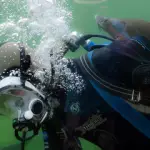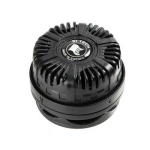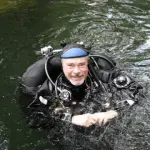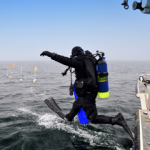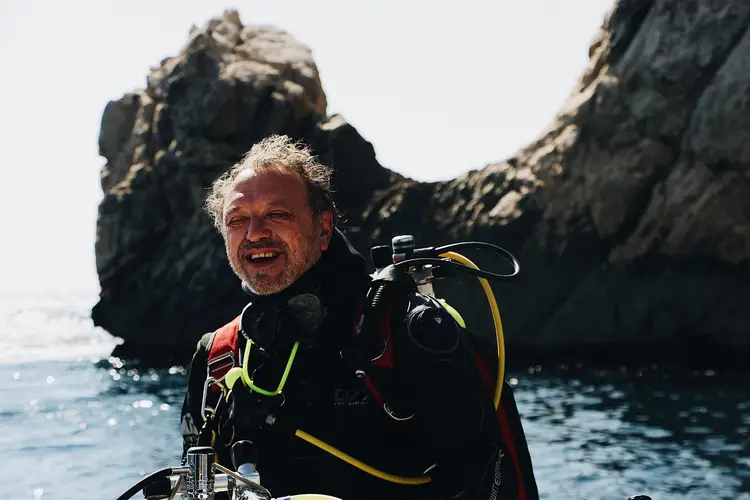
If you are new to drysuit diving, or if you’ve suffered a drysuit valve leak, you may be asking drysuit valve open or closed. This leads to questions about whether it’s safe to keep a drysuit valve closed too. That’s why the question about drysuit valve open or closed is a very important.
For your own safety when diving in a drysuit you should leave your drysuit exhaust valve open, but close it a quarter to a half turn from fully open to avoid any leaks. An open drysuit valve will then automatically vent if you ascend to let out the expanded air from your drysuit.
The best way to do more diving is to book yourself on a scuba diving liveaboard. You can check the latest and best deals on liveaboards using the following window:
How does a drysuit work?
A drysuit is designed to keep you dry. By remaining dry you are able to dive in colder waters in a drysuit, as you can wear warmer undergarments to keep you warm.
Because you stay dry in a drysuit, this means there’s an airspace inside the drysuit. That means that as you descend and ascend on a dive, this air space will be affected by the changes in pressure (Boyle’s Law). As a result the air inside your drysuit needs to be regulated. This is done by adding more air on your descent via the inflator valve, to prevent what’s known as drysuit squeeze. But also to increase your buoyancy too.
In fact most drysuit divers use their drysuit entirely for buoyancy and don’t use their BCD underwater at all. But even those divers who use their BCD for buoyancy with a drysuit, will also add air to their drysuit to prevent drysuit squeeze.
When drysuit divers ascend it’s necessary to vent their air using their drysuit valve. But if the drysuit valve is closed, the air won’t vent. A closed drysuit valve could be dangerous if you started to ascend and for whatever reason you’re not able to open the valve.
Pro diver tip. If you are unable to vent your drysuit using your drysuit valve and you are on a rapid ascent, vent the suit from your neck or wrist seals.
How to use a drysuit safely
To use a drysuit safely you should never close your drysuit exhaust valve. This is even if you decide to use your BCD as buoyancy instead of using your drysuit. This is because if you choose to use your BCD for buoyancy, you are in fact using both your BCD and drysuit for buoyancy.
You will always need to add air into your drysuit to prevent the uncomfortable drysuit squeeze, which is adding to your buoyancy. Which means that when you ascend after your dive, you will need to vent your drysuit and your buoyancy control device (BCD) together.
Some argue that it’s okay to close the drysuit valve on a dive. This might be okay if you are a very experienced scuba diver. But there’s one thing diving when everything is going to plan, but what about if it all goes wrong.
When you’re in a panic diving, it’s very easy to forgot to do something. Also, when you’re diving things can happen very fast and things can go wrong very very quickly. If your drysuit valve is closed, you run the risk of forgetting to open it on your ascent, which can happen if you’re stressed, narked or rescuing someone else. Which is also another important point, if your dive buddy has closed their drysuit valve and you need to rescue them, you will first need to open the valve. This wastes valuable time during a rescue.
For me diver safety is paramount and safe diving for me dictates you should leave the drysuit valve open.

What can happen with a fully open drysuit valve?
It’s possible that if you leave your drysuit valve fulling open it can leak. Which is why it’s recommended to opening if fully and then turn it back a quarter to half a turn. This helps to prevent your drysuit valve from leaking and stops you getting wet in your drysuit. However, if you find your dump valve is not dumping air quickly enough on your ascent, you should opening it fully to make sure it works as best as possible.
Having said that, some drysuit valves don’t leak when they are fulling open. You will soon find out when you’re diving which type of valve you have, as you’ll feel cold water trickling down your shoulder and down your arm. If you feel this sensation on a dive, close the drysuit valve off a quarter to a half a turn to stop the water leak. A small leak on a drysuit valve isn’t a major problem on a dive, but it might mean you will start to get cold.
A final thought on drysuit valve open or closed
Keeping the air in your drysuit shouldn’t really be a problem diving in a drysuit with the exhaust valve open. But you should be more worried about getting air out of your drysuit should you need to.
For most of your dive you will be in a horizontal position in any event, which means the drysuit valve won’t vent when it’s open, even if you ascend. The only way to vent a drysuit is to go vertical so the drysuit valve is pointing towards the surface.
If you want to stay warm on the surface, you could close the value off completely at the end of the dive and fill your drysuit with air.
I hope you enjoyed this article about drysuit valve open or closed
I’d love to hear from you. Tell us about your adventures of diving and snorkeling, in the comments below. Please also share your photos. Either from your underwater cameras or videos from your waterproof go-pro’s!
If this article hasn’t answered all of your questions. If you have more questions either about snorkeling or scuba diving (or specifically about drysuit valve open or closed), please comment below with your questions.
There will also be many more articles about scuba and scuba diving safety tips (and on snorkeling too) for you to read and learn about this fabulous sport.
Have fun and be safe!

